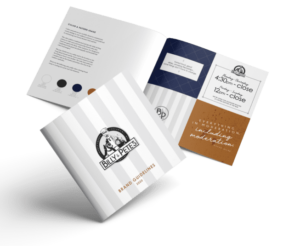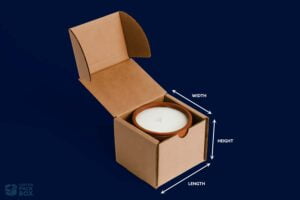Today’s busy market makes product packaging crucial to your brand’s identity, consumer satisfaction, and promotion. The proper bespoke packaging boxes for your business require a thorough understanding of your brand, thoughtful design, material selection, and more. This detailed guide will help you build packaging that looks fantastic and matches your company goals.
Delve Deep Into Your Brand Identity
Understanding your brand’s identity is the first step to unique packaging. Packaging represents your brand, thus it should reflect your beliefs, aesthetics, and business identity. Consider the feelings and messages you wish to convey through packaging. Is it luxury, eco-friendliness, innovation, or a mix? Understanding these factors can help you create a design that grabs attention and connects with clients
Design Considerations: More Than Meets the Eye
There’s more to consider than just aesthetics when designing custom packaging boxes. The size, shape, and durability must be customized to fit your product and safeguard it throughout shipping and handling. Consider your unboxing experience. This moment can boost consumer satisfaction and be shared on social media. Create a distinctive unwrapping experience that clients will want to share with unusual opening methods, brilliant colors, or personalized inscriptions inside the box.
Material Matters: Balancing Form, Function, and Sustainability
The correct packing materials affect the unboxing experience and your brand’s environmental effect. Sustainable materials can appeal to your customers’ values as sustainability becomes more important. Plant-based inks, recyclable paper, and biodegradable plastics balance usefulness with environmental responsibility. Material selection also depends on the product’s weight, protection, and aesthetics. Texture and finish vary by material, which might impact brand perception.
Budgeting Without Compromising Quality
Brand image and customer experience can be improved with unique packaging. This investment must be done wisely. Be sure to budget for design, materials, manufacturing, and delivery. Ordering in bulk or simplifying designs can save expenses without losing quality. Remember that superior packing can boost consumer happiness, loyalty, and repeat purchases.
Prototype, Test, Refine
You must prototype, test, and polish your bespoke packaging design before finalizing it. This stage makes sure your packaging looks excellent and works properly in real life. Testing can disclose unexpected concerns with durability, opening, or consumer expectations. Making prototype-based improvements can save money and avoid customer dissatisfaction.
Keeping Pace with Packaging Innovations
New packaging trends and technology can differentiate your brand. Smart packaging that integrates QR codes for customer participation and materials that change color with temperature can give your packaging a unique look. Not every trend is perfect for your brand, but remaining educated lets you make choices that improve functionality, sustainability, or client interaction.
Collaboration Is Key
Creating your desired packaging sometimes requires working with designers and manufacturers unless you have a dedicated team. From material selection to production, these experts can help. Find partners who share your quality and sustainability values and have experience. This partnership can convert your idea into a market-leading product.
Don’t Forget the Logistics
Logistics are often forgotten when considering custom packaging. Beautiful boxes should be useful for storage, handling, and shipment as well as attractive on a shelf. Consider weight, stackability, and shipping stress durability. Optimizing packing for logistics can reduce shipping costs and damage, ensuring your product reaches in ideal shape.
Wrapping Up: The Total Package
According to custom pack box, Designing unique company packing boxes goes beyond aesthetics. It’s about communicating your business identity and improving consumer experience sustainably and affordably. Understanding your brand, carefully picking materials, smart budgeting, and working with the right people may help you create packaging that protects your goods and supports your marketing strategy. Keep in mind that in today’s competitive industry, your packaging can make or break your product.



